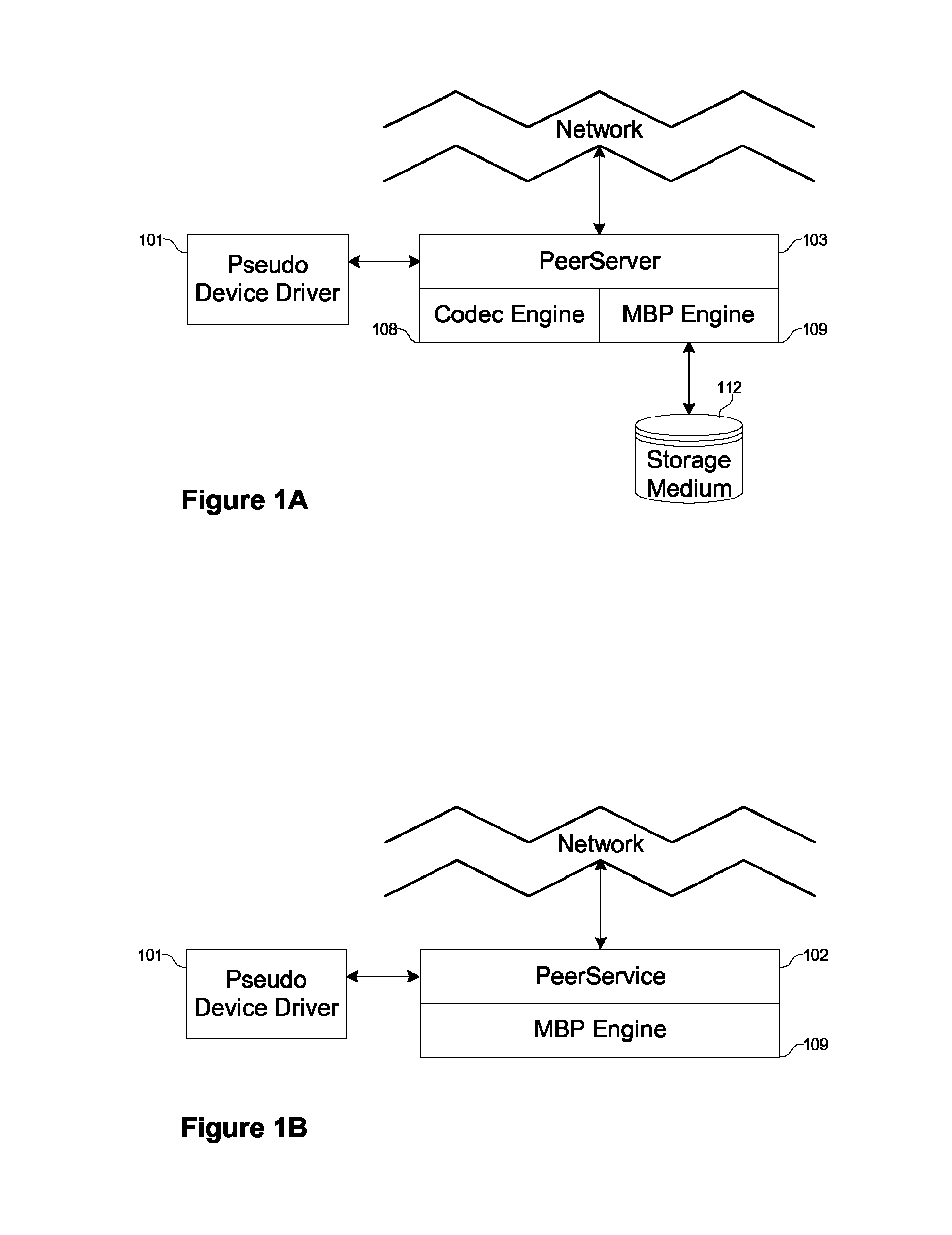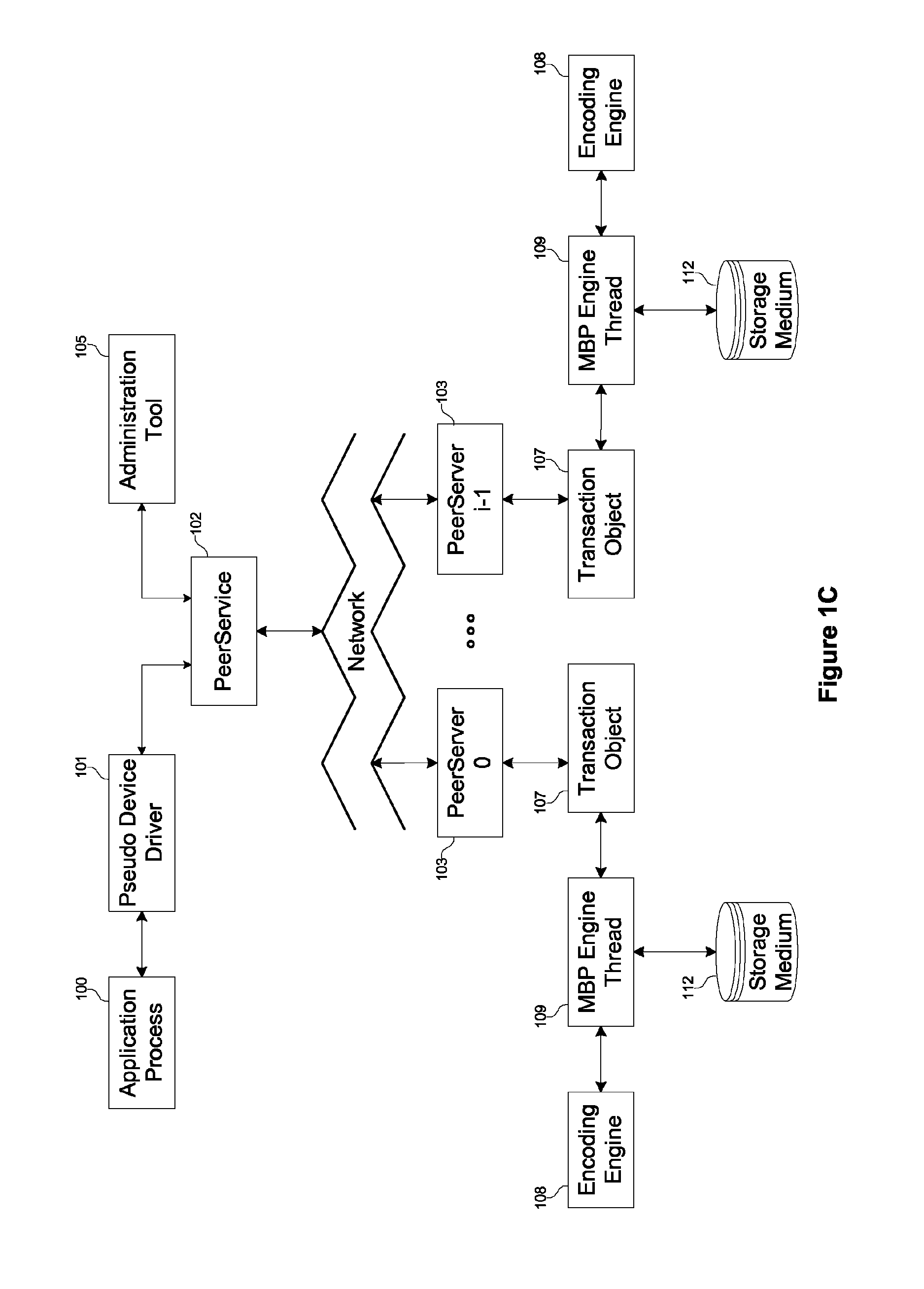Peer to peer code generator and decoder for digital systems and cluster storage system
a digital system and peer-to-peer code technology, applied in the field of encoding and decoding digital content, can solve the problems of inability to meet the requirements of most software applications, lack of performance, and time-consuming encoding process of reed-solomon, and achieve the effect of high performance, simplified encoding computation of checksum symbols, and high performan
- Summary
- Abstract
- Description
- Claims
- Application Information
AI Technical Summary
Benefits of technology
Problems solved by technology
Method used
Image
Examples
third embodiment
A Third Embodiment
[0197]A third embodiment of the present invention is a high-availability storage management system. In this enterprise environment, off-the-shelf PC's are clustered into a seamless high-performance and highly available storage solution. Very large data sets can be staged providing highly reliable access that can withstand multiple simultaneous failures. The failures are not simply at the component level (e.g., processor, memory, RAID, etc.) but at the entire system level. Embodiments of the present invention stripe the content not across spindles of a single RAID, but across entire systems that themselves may use RAID storage subsystems. In a conventional system, redundancy for hardware components entails a secondary / stand-by resource (e.g., dual controllers, entire system, etc.) and redundancy at the software level usually entails replication of the data onto another server. Yet most redundancy solutions guard against a single point of failure only and a second fa...
fourth embodiment
A Fourth Embodiment
[0198]A fourth embodiment of the present invention is an on-line backup system. In the enterprise environment, this system is able to use all spare storage capacity across computers as a seamless repository. The system is able to use storage across computers without compatibility concerns about the hardware manufacturers, operating systems, etc. As various computers in a local area network may have greater or smaller available storage capacity, it is often difficult to find a single disk with enough free space to store large content. Embodiments of the present invention are able to adjust the formation of clusters to use most available free disk space in underutilized systems.
fifth embodiment
A Fifth Embodiment
[0199]A fifth embodiment of the present invention is an off-line backup system. In the enterprise environment, this system clusters groups of tape drives to provide a high performance and high availability tape backup system. As on-line storage capacity grows into terabytes and beyond, it is becoming difficult to transfer to slow tape devices such large data sets. The large capacity of a single tape drive cannot match the HDD capacity of data centers. Multiple tapes have to be used in sequence to capture all the on-line data. Robotic tape systems exist to automate the swapping of tapes, however for most systems a single drive is used for storing and retrieving data. Embodiments of the present invention use banks of (robot controlled) tape drives to store and retrieve large data sets. The data is read / written in parallel to all the tape drives thereby multiplying their performance. A further benefit is that the system automatically recovers from broken tape drives o...
PUM
 Login to View More
Login to View More Abstract
Description
Claims
Application Information
 Login to View More
Login to View More - R&D
- Intellectual Property
- Life Sciences
- Materials
- Tech Scout
- Unparalleled Data Quality
- Higher Quality Content
- 60% Fewer Hallucinations
Browse by: Latest US Patents, China's latest patents, Technical Efficacy Thesaurus, Application Domain, Technology Topic, Popular Technical Reports.
© 2025 PatSnap. All rights reserved.Legal|Privacy policy|Modern Slavery Act Transparency Statement|Sitemap|About US| Contact US: help@patsnap.com



